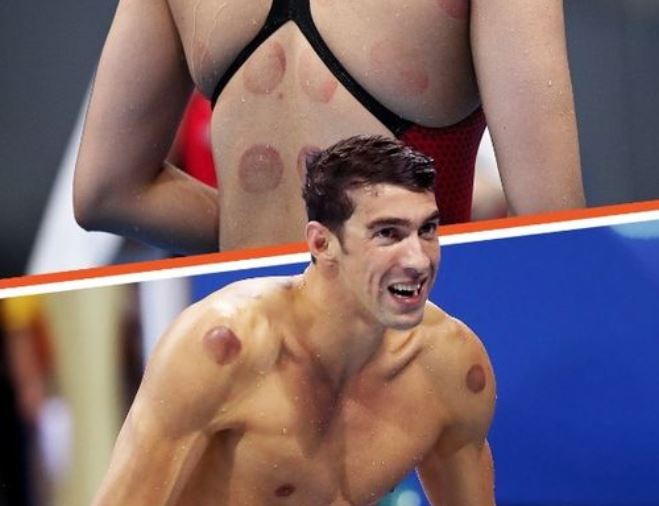The Olympic Games have long been a platform for athletes to showcase their incredible physical prowess, but some competitors have been sporting an unusual trend that has left spectators puzzled. Dark red circles on the skin, often visible on the shoulders, backs, and arms of elite athletes, have sparked curiosity and speculation.

From Michael Phelps to Jennifer Aniston, these distinctive marks have been spotted on various high-profile individuals. But what’s behind this peculiar phenomenon?
The answer lies in an ancient Chinese medical practice called cupping therapy. This traditional treatment involves applying heated cups to the skin, creating suction that draws blood vessels and skin toward the cup. The resulting marks, often mistaken for bruises, are actually a sign of the body’s response to the therapy.

Cupping has been used for over 2,000 years to alleviate pain, respiratory issues, and muscle stiffness. Proponents claim it improves circulation, relaxes muscles and joints, and has anti-inflammatory properties.

Athletes and celebrities swear by cupping, citing its benefits in enhancing performance and aiding recovery. Phelps, an unintentional poster child for the practice, has inadvertently raised awareness about its advantages.

Other notable fans of cupping include members of the US women’s gymnastics team and NBA players. They attest that the therapy helps relieve discomfort in their strained bodies, promoting healing and tissue elasticity.

While some researchers remain skeptical about the exact mechanisms behind cupping, studies suggest it can have medicinal effects, particularly in treating conditions like low back pain, acne, and facial paralysis.

The mysterious red circles, once a subject of intrigue, are now revealed to be a testament to the therapeutic benefits of cupping. As athletes and celebrities continue to embrace this ancient practice, its popularity is likely to endure.

The next time you spot these distinctive marks on an Olympian or celebrity, remember that they’re not injuries or body art – but rather a symbol of their commitment to wellness and performance.


